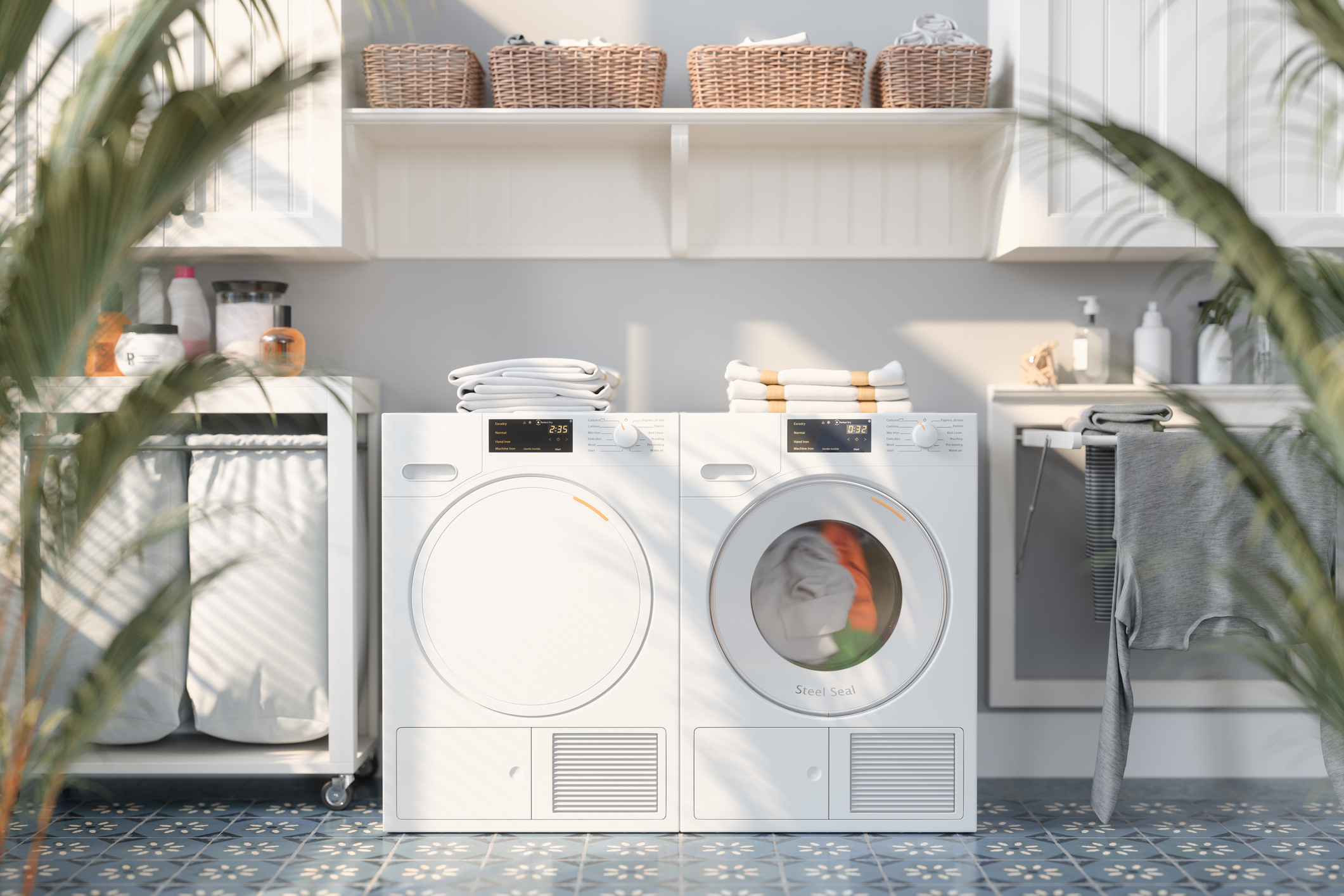Heated airer vs tumble dryer – which is cheaper?
Is a heated airer or a tumble dryer more cost-effective when drying clothes indoors? We crunch the numbers


Air drying clothes becomes increasingly difficult as temperatures drop, leaving many turning to technology such as tumble dryers and heated airers to finish their laundry.
With energy prices set to rise by 1.2% in January, many households will be looking for ways to save on utility bills. Knowing how to use appliances in the most energy-efficient way can make a massive difference, so we’ve compared radiators vs electric heaters, fan heaters vs oil heaters, and wood-burning stoves vs central heating.
Here we put heated airers and tumble dryers head-to-head to discover which is the most cost-effective.
MoneyWeek
Subscribe to MoneyWeek today and get your first six magazine issues absolutely FREE

Sign up to Money Morning
Don't miss the latest investment and personal finances news, market analysis, plus money-saving tips with our free twice-daily newsletter
Don't miss the latest investment and personal finances news, market analysis, plus money-saving tips with our free twice-daily newsletter
How much does it cost to run a heated airer?
How much it costs to run a heated airer depends on several factors, such as how powerful it is, the cycle you put your washing machine on beforehand and the type of fabric that it’s drying. Most heated airers will take between three to eight hours to dry a full load.
Homeware retailer Dunelm sells heated airers of different sizes, such as the two-tier airer which is currently £75. It costs around 5p to run per hour, so if you used it for five hours you’d be looking at 25p per use, 75p three times a week, and £3 a month.
A three-tier heated airer, which costs £95 at Dunelm, is slightly more expensive to use. It costs 8p per hour to run, which works out at 40p per five-hour use, £1.20 per week and £4.80 a month.
The calculations are based on the current Ofgem energy price cap of 24.5p per kWh.
To reduce the time your heated airer is plugged in, check if your clothes have spun properly in the washing machine to remove excess water. You should also move the clothes around on the airer every so often to make sure they are drying equally.
How much does it cost to run a tumble dryer?
Tumble dryers are often considered a British household staple but they are also one of the most energy-hungry home appliances, meaning they’re not only expensive to buy but also to run.
There are three main types of tumble dryers: heat pump, condenser and vented. We’ve compared how much each of them costs to run, based on a typical 9kg tumble dryer.
| Type of tumble dryer | Cost to run (full load) | Cost per week (three uses) | Cost per month |
|---|---|---|---|
| Heat pump (2.16 kWh) | £0.55 | £1.65 | £6.6 |
| Condenser (5.2 kWh) | £1.27 | £3.81 | £15.24 |
| Vented (5.34 kWh) | £1.3 | £3.9 | £15.6 |
You would be paying around £80 a year to run a heat pump tumble dryer, £183 for a condenser and £187 for a vented tumble dryer, based on three loads per week.
Out of the three, heat pump tumble dryers are energy-efficient and cost around three times less to run. An 8kg Beko heat pump tumble dryer costs £349 at Currys, whereas a 9kg Bosch one will cost you £629 at Argos.
Heated airer vs tumble dryer – which is cheaper?
Heated airers take longer to dry clothes, however running a two-tier rack for eight hours a day to dry a couple of loads will cost less than using a tumble dryer. Heated airers also have a lower upfront cost – you can purchase one for under £100.
If you don’t have space for a heated airer in your house, the heat pump tumble dryer is the cheapest dryer to use, costing just 55p per full load on average. You could also cut the costs of drying your clothes by selecting a high-spin cycle to reduce the amount of water left in your clothes.
For those who own an Economy 7 meter, you could run it at off-peak times to save money as this meter charges a cheaper night-time rate.
Get the latest financial news, insights and expert analysis from our award-winning MoneyWeek team, to help you understand what really matters when it comes to your finances.

Oojal has a background in consumer journalism and is interested in helping people make the most of their money.
Oojal has an MA in international journalism from Cardiff University, and before joining MoneyWeek, she worked for Look After My Bills, a personal finance website, where she covered guides on household bills and money-saving deals.
Her bylines can be found on Newsquest, Voice.Cymru, DIVA and Sony Music, and she has explored subjects ranging from politics and LGBTQIA+ issues to food and entertainment.
Outside of work, Oojal enjoys travelling, going to the movies and learning Spanish with a little green owl.
-
 Metals and AI power emerging markets
Metals and AI power emerging marketsThis year’s big emerging market winners have tended to offer exposure to one of 2025’s two winning trends – AI-focused tech and the global metals rally
-
 8 of the best houses for sale with beautiful fireplaces
8 of the best houses for sale with beautiful fireplacesThe best houses for sale with beautiful fireplaces – from a 15th-century cottage in Kent to a 17th-century palazzo in Oxfordshire